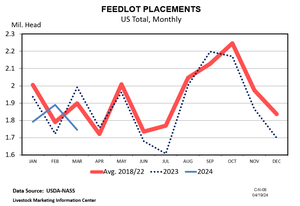While environmentalists would prefer our nation’s expansive grasslands remain untouched, cattlemen know that responsible grazing is a critical tool to proper land management that reaps many benefits for a healthy landscape and wildlife habitat.
October 16, 2018

Last week, our four-year old daughter Scarlett came home from preschool with lots to talk about. The local fire department had visited the school, and she was excited to tell me all about the firefighters who spoke in her classroom and how big the fire engine was. She gave me a stern lecture about ways to safely exit a home in the event of a fire, and she dramatically demonstrated how to stop, drop and roll.
Always a “beef ambassador,” I asked Scarlett if she knew that cattle are firefighters, too. She rolled her eyes and told me, “Mom, that’s impossible. Cows can’t drive fire trucks!”
Granted, Scarlett made a good point, but I really wanted to explain to her how cattle grazing can reduce and slow the spread of wildfires.
Contrary to what some environmentalist groups would like folks to think, letting land sit idle is a recipe for disaster. Underutilized grasslands just need a lightning strike to become blazing, fast-burning fires, quickly consuming acres and acres of ground.
Livestock grazing can be used as a tool to lower wildfire risk, as well as reduce the ultimate impact of the fire, by slowing down how fast the flames spread and how hot the fire burns. They do this by grazing down the annual and perennial grasses, promoting new growth and leaving far less dead underbrush that acts as kindling to a fire.
READ: Improving burn management with wildfires
In the wake of the California wildfires that burned nearly 7,000 acres of land, researchers are looking at ways to use grazing as a tool to reduce future fire risk.
According to an article written by Brad Carlson for the Capital Press titled, “Researcher establishes grazing as fire tool,” scientists are looking at ways to lessen the catastrophic impacts of large scale wildfires.
Carlson writes, “Kirk Davies and his fellow rangeland scientists in southeastern Oregon for years produced studies showing earlier grazing reduces future fire risk while benefiting native plants.
“Now they are working to figure out how to apply these lessons on the larger scale that the vast sagebrush steppe landscape often demands.”
Despite the proven benefits of livestock grazing on reducing wildfires, Davies said there are certain limitations to applying this theory of applied, targeted grazing on large plots of ground. These limitations include coordinating people, cattle and equipment, having enough livestock to graze expansive rangelands and facing public opposition to public lands grazing.
“We are hoping to work with more landscape ecologists, looking at how it applies across the landscape,” Davies said in the interview with Capital Press. “That would include investigating, long-term, how rangeland plant communities respond to fire whether they are grazed or not, and deriving a grazing approach to suit a location’s unique fire risk — deciding how much to graze and in which season, for example.”
READ: Fire and ice: Surviving the effects of natural disasters
To address ongoing criticism from environmentalists who oppose allowing cattle to graze on federal lands, Davies has decades of research that prove the benefits of cattle grazing for native plants.
“We saw that long-term ungrazed areas, when they were burned, were subsequently invaded by exotic annual grasses,” he said. “We found moderately grazed areas recovered to the native plant community. They didn’t have that invasion and were much better off.”
What’s more, Davies’ research shows that in ungrazed areas, the severity of fire was much more intense.
Of these ungrazed areas, Davies said, “We found we had larger and hotter fires, and those fires caused higher mortality of desired native annual bunch grasses. We also found ungrazed areas were much more likely to ignite with an ignition source and more likely to spread with higher flame heights and faster-moving fire.”
Now I’m not sure Scarlett grasped the concept of cattle serving as natural firefighters; however, it’s a message our consumers need to understand. The reality of leaving the expansive federal lands of the West untouched and unmanaged results in catastrophic fires that devastate homes, communities and the landscape we all love.
READ: What's the best way to defeat brush and improve range?
To the point — responsible cattle grazing (not to mention the timber industry, too) are ways to manage these lands properly. Grazing promotes new growth of native grasslands and removes dead brush that serves as kindling for fires. Plus, as cattle graze, they fertilize and aerate the soil and capture carbon by ensuring the grasslands remain intact instead of being modernized or farmed.
I believe the beef industry’s environmental stewardship and sustainability story is a great one. When cattlemen are in synch with nature, amazing things happen. Now we must get that story in front of the folks who need to hear it the most. I’m talking about the folks who are very concerned about cow burps destroying the ozone layer.
The opinions of Amanda Radke are not necessarily those of beefmagazine.com or Farm Progress.
About the Author(s)
You May Also Like





